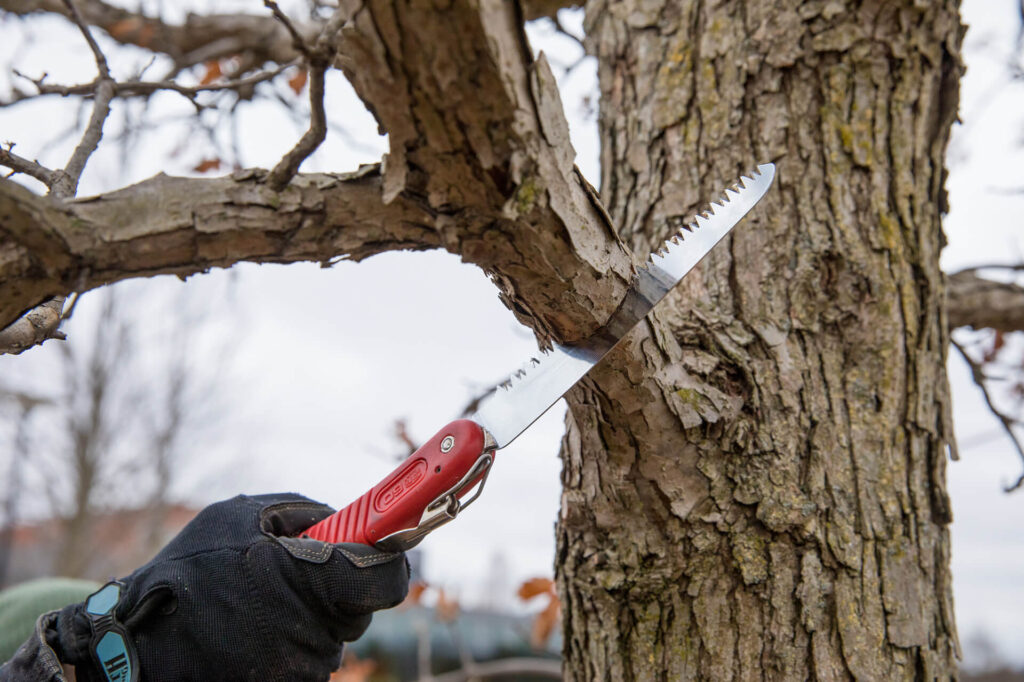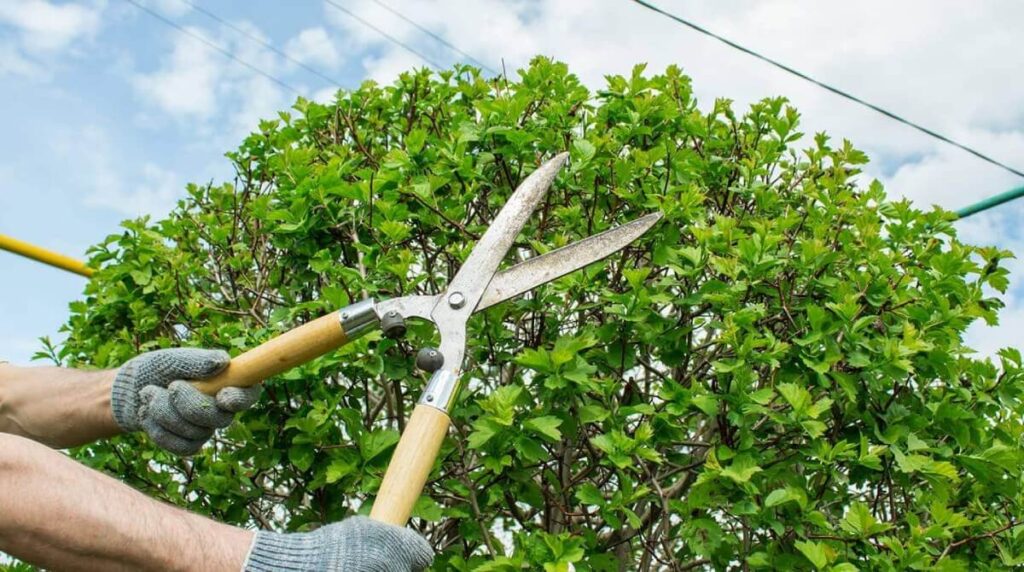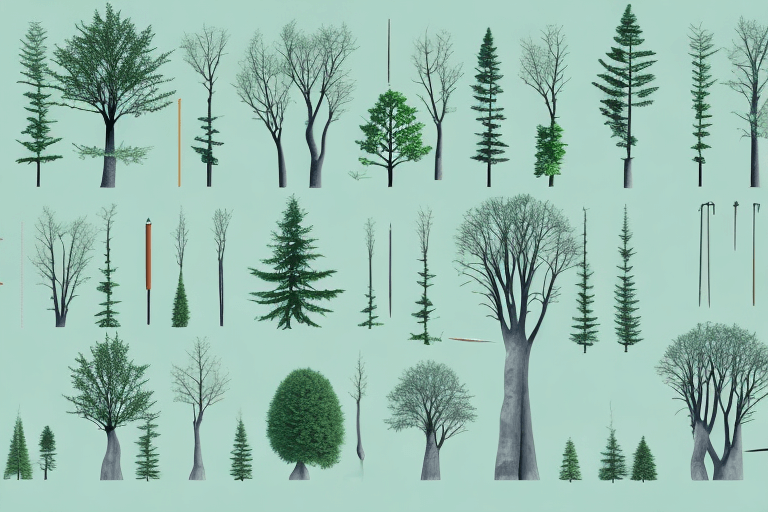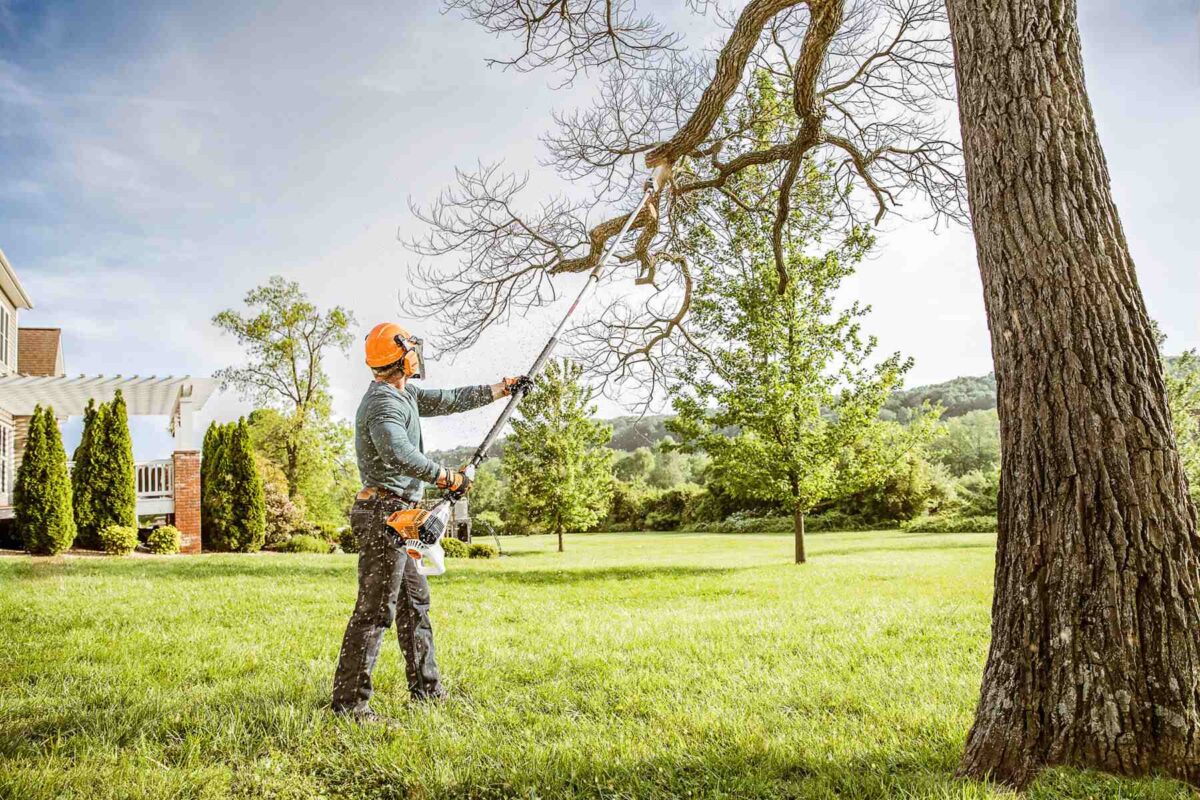Tree pruning is an essential practice that helps maintain the health, aesthetics, and longevity of trees. Understanding the basics of tree pruning is crucial for every tree owner or enthusiast. Whether you’re a homeowner with a few trees in your backyard or a professional arborist, knowing when and how to trim trees is an important skill to acquire.
Understanding the Basics of Tree Pruning
The Importance of Tree Pruning
Before delving into the science and artistry behind tree pruning, it’s important to understand why it is necessary. Tree pruning offers a range of benefits, including:
- Promoting healthy growth by removing diseased, damaged, or dead branches.
- Enhancing the appearance of trees by shaping them and maintaining their desired form.
- Improving air circulation and allowing more sunlight to penetrate the canopy, encouraging photosynthesis.
- Reducing the risk of branch failure and potential damage to surrounding structures during storms.

Tree pruning is not simply a random act of cutting branches. It is grounded in scientific principles that support tree health and growth. Pruning involves selective removal of branches to achieve specific objectives, such as:
- Clearing obstructions or hazards by removing branches that interfere with power lines, buildings, or walkways.
- Restoring damaged or weakened trees by removing structurally unsound branches or balancing the tree’s crown.
- Thinning the canopy to improve airflow and reduce the risk of fungal diseases.
Beyond the science, tree pruning also involves an artistic sensibility. Skilled arborists can shape trees to complement their surroundings, enhance the visual appeal, and create focal points in landscapes. Artistic pruning techniques, such as crown thinning and crown reduction, require careful consideration of the tree’s natural form and the desired outcome.
See Also: Why Pruning Is Vital for Tree Health and Aesthetic Appeal
When it comes to promoting healthy growth, tree pruning plays a vital role. By removing diseased, damaged, or dead branches, the overall health of the tree is improved. These branches can be a breeding ground for pests and diseases, which can spread to the rest of the tree if not addressed. Additionally, by removing these branches, the tree can allocate its resources more efficiently, allowing for better growth and development.
Enhancing the appearance of trees is another important aspect of tree pruning. By shaping the tree and maintaining its desired form, it can fit in better with its surroundings and contribute to the overall aesthetic of the landscape. Skilled arborists can carefully trim and shape the branches to create a visually pleasing tree that adds value to the property.
Improving air circulation and allowing more sunlight to penetrate the canopy is crucial for the health of the tree. Photosynthesis, the process by which trees convert sunlight into energy, is essential for their growth and survival. By pruning the tree and thinning the canopy, more sunlight can reach the lower branches and leaves, promoting better photosynthesis and overall tree health.
Reducing the risk of branch failure and potential damage to surrounding structures during storms is another significant benefit of tree pruning. Weak or damaged branches are more likely to break or fall during strong winds or storms, posing a risk to people and property. By identifying and removing these branches through pruning, the risk of accidents and property damage can be minimized.
When it comes to the science behind tree pruning, it is important to consider the specific objectives that pruning aims to achieve. Clearing obstructions or hazards is a common objective, as branches that interfere with power lines, buildings, or walkways can pose a significant risk. By selectively removing these branches, the safety and functionality of the surrounding area can be improved.
Restoring damaged or weakened trees is another objective of tree pruning. By removing structurally unsound branches or balancing the tree’s crown, the overall stability and health of the tree can be restored. This is particularly important after storms or other events that may have caused damage to the tree.

Thinning the canopy is a pruning technique that is aimed at improving airflow and reducing the risk of fungal diseases. When the canopy is too dense, air circulation is restricted, creating a favorable environment for fungal growth. By selectively thinning the canopy, the airflow is improved, reducing the risk of fungal diseases and promoting a healthier tree.
While the science behind tree pruning is essential, there is also an artistic aspect to it. Skilled arborists have the ability to shape trees in a way that complements their surroundings and enhances the visual appeal of the landscape. Techniques such as crown thinning and crown reduction require careful consideration of the tree’s natural form and the desired outcome. By applying their artistic sensibility, arborists can create focal points in landscapes and transform ordinary trees into stunning works of living art.
The Right Time for Tree Pruning
Tree pruning is a vital aspect of tree care, and timing plays a crucial role in ensuring its success. Different seasons offer distinct advantages and disadvantages for pruning. Here are some important considerations:
Seasonal Considerations for Pruning
Winter
Pruning during winter, when trees are dormant, has several benefits. Firstly, the absence of leaves allows for better visibility of the tree’s structure, making it easier to identify and remove any problematic branches. Additionally, pruning during this time encourages vigorous spring growth, as the tree’s energy is focused on root development rather than foliage production.
Spring
Pruning in late spring, after the tree has bloomed, is a popular choice for many arborists. By this time, the risk of diseases and pests is significantly reduced, minimizing the chances of infections entering through pruning wounds. Moreover, pruning in late spring stimulates new growth, giving the tree a fresh and vibrant appearance.
Summer
While summer pruning is generally not recommended for most tree species, there are certain situations where it can be beneficial. Summer pruning is ideal for shaping and controlling the growth of trees, especially those that tend to be overly vigorous. However, caution must be exercised to avoid stressing the tree, as excessive pruning during this time can lead to sunburn and other issues.
Fall
Pruning in early fall is often done to remove dead or damaged branches before winter sets in. This helps prevent the spread of diseases and minimizes the risk of branches falling during storms. Additionally, fall pruning prepares the tree for the dormant season, allowing it to conserve energy and focus on essential processes like root development.
Tree Age and Pruning
The age of a tree also influences its pruning requirements. Young trees, especially those in their formative years, require formative pruning to establish a healthy and well-balanced structure. This involves removing any competing branches, correcting growth defects, and training the tree to develop a strong central leader. Formative pruning sets the foundation for the tree’s future growth and ensures its long-term health and stability.
On the other hand, mature trees may require selective pruning to maintain their shape, remove hazardous branches, or address specific issues. As trees age, their growth patterns may change, and certain branches may become weak or pose a risk to property or people. Consulting with a professional arborist is crucial in determining the appropriate pruning approach based on the tree’s age, species, and overall health.
Signs Your Tree Needs Pruning
Observing your tree’s condition and behavior can provide valuable insights into whether it requires pruning. Look out for the following signs:
Dead or decaying branches
Dead or decaying branches not only detract from the tree’s aesthetic appeal but can also pose a safety hazard if they fall.
Overlapping or rubbing branches
When branches grow too closely together, they can rub against each other, causing wounds that may become entry points for diseases and pests.
Excessive leaning or unbalanced growth
Trees that lean excessively or have unbalanced growth may indicate structural issues that require pruning to restore stability.
Crowded or crossing branches
When branches become overcrowded or cross each other, they can hinder proper air circulation and sunlight penetration, leading to reduced overall tree health.
Thick foliage blocking sunlight
If your tree’s foliage has become so dense that it blocks sunlight from reaching the lower branches or surrounding plants, pruning can help restore balance and promote healthy growth.
If you notice any of these signs, it’s important to address them promptly to prevent further damage or potential hazards. Regular tree inspections by a certified arborist can help identify pruning needs and ensure the long-term health and beauty of your trees.

Tools and Techniques for Effective Pruning
Pruning is an essential practice for maintaining the health and appearance of trees. It involves the selective removal of branches to improve structure, promote growth, and enhance overall tree health. To achieve successful pruning, it is crucial to have the right tools and employ proper techniques.
Essential Pruning Tools
Having the right tools is crucial for successful tree pruning. Some essential pruning tools include:
- Hand pruners or secateurs for small branches
- Lopping shears for larger branches
- Pruning saws for thicker branches
- Pole pruners or tree pruners for reaching high branches
- Protective gear, such as gloves and safety goggles
These tools enable arborists and homeowners to make precise and clean cuts, minimizing damage to the tree and reducing the risk of disease transmission.
Pruning Techniques for Tree Health
Shear cuts, thinning cuts, and heading cuts are common pruning techniques used to promote tree health. Shear cuts involve trimming the tips of branches to maintain shape and encourage dense foliage. This technique is commonly used for hedges and formal topiaries.
Thinning cuts, on the other hand, involve selectively removing branches to improve airflow and reduce weight. By thinning out the canopy, arborists can reduce the risk of wind damage and improve sunlight penetration, benefiting the overall health of the tree.
Heading cuts stimulate growth by removing a portion of a branch, encouraging new buds to form. This technique is often used to shape young trees or rejuvenate older ones. By strategically removing branches, arborists can direct growth and create a more balanced and aesthetically pleasing tree structure.
Safety Measures in Tree Pruning
Pruning trees can be hazardous if not done safely. It’s crucial to follow safety guidelines to protect yourself and the tree. Here are some important safety measures to consider:
- Wear protective gear, such as gloves, safety goggles, and a helmet, to shield yourself from falling debris and potential injuries.
- Use proper tools for the job. Using the right tool for each branch size ensures clean cuts and reduces the risk of accidents.
- Inspect the tree and surrounding area for potential hazards, such as dead branches, power lines, or unstable footing. Clear the area and address any safety concerns before starting the pruning process.
- Understand the potential risks involved. Pruning large trees or working at heights can be dangerous. If you are unsure or uncomfortable with the task, it’s advisable to hire a professional arborist who is trained in safe pruning practices.
By prioritizing safety and following proper pruning techniques, you can ensure a successful and injury-free pruning experience.
Common Tree Pruning Mistakes to Avoid
Over-pruning and Its Consequences
Over-pruning, also known as excessive crown reduction, can lead to severe stress, decay, and even tree death. It’s important to avoid excessive pruning and only remove the necessary branches to maintain the tree’s health and structure.
Incorrect Timing of Pruning
Pruning at the wrong time can disrupt the tree’s growth cycle and make it more susceptible to diseases and pests. Understanding the specific timing requirements for different tree species is crucial to ensure proper pruning.
Neglecting the Pruning Process
Neglecting regular tree pruning can result in structural issues, increased hazards, and reduced tree health. It’s important to establish a pruning schedule and consistently maintain it to keep your trees in optimal condition.
In conclusion, understanding the art and science of tree pruning is essential for tree owners and arborists alike. By recognizing the importance of pruning, timing it correctly, using the appropriate tools and techniques, and avoiding common mistakes, you can ensure the health, beauty, and longevity of your trees. Regular pruning not only benefits the individual trees but also contributes to a healthier environment and a more aesthetic landscape.
